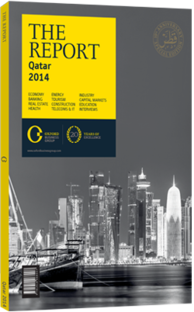Promoting best practice: Addressing the building code and enhancing sustainability
With the construction sector undergoing both a major boom and heightened global scrutiny in the run-up to the 2022 FIFA World Cup, Qatar has been looking hard at its current building code in an effort to boost both safety and sustainability. This process has also been going on in an atmosphere of convergence within the GCC countries. Indeed, in December 2013 the six-member organisation announced that the first version of a unified code, applicable throughout the GCC, should be available by the end of 2014.
Enhancing Standards
Qatar operates according to its own, 2010 code, known as the Qatar Construction Standards (QCS). This superseded the first such set of rules, issued back in 2000. The 2010 version, however, is also being revised, according to a statement to the local press in October 2013 from Mohamed Ahmed Al Humaidi, the vice-chair of the Qatar chapter of the Institute of Occupational Safety and Health (IOSH). Currently, the QCS consists of 28 separate chapters that cover all areas of construction, from fire-fighting systems to landscaping. According to Al Humaidi, more specifications are now being added, however.
Two particular areas that will likely be expanded are risk assessment and construction design management, both of which will add extra safeguards for protecting workers and ensuring safe practices. This is particularly relevant given the deaths and injuries that have occurred on Qatar’s building sites recently, and which have attracted much international and local attention. The revised code will also likely include an extra chapter dealing with the design and construction of camps for workers. The aim will be to ensure that these are also up to the best international standards and provide a comfortable environment for the hundreds of thousands of overseas workers. A further addition to the QCS is likely to be more provisions on work-zone traffic management. With many individual construction projects resembling small towns in their scale, roads within sites and access roads to them can become busy thoroughfares. The new code seeks to ensure proper traffic management of these links, enhancing workplace safety. There will also likely be closer monitoring of compliance with the revised QCS, with government consultants likely preparing monthly reports on contractors’ activities and events, on-site.
Going Regional
At the same time, the GCC code takes into account the fact that other Gulf countries are also currently going through a building boom. The code will try to ensure certain minimum safety requirements across the GCC, according to press reports, with a review procedure at the design stage and continuous monitoring during the construction phase. The code, which will allow for customisation to local standards, will only serve as a guideline, however.
Sustainability
One area the new GCC code explicitly seeks to address too is the question of sustainability. The code must ensure that building is to a standard that will last, while also meeting requirements covering efficiency and environmental impact. This last point has recently been very much front and centre in planning in Qatar. The Gulf Organisation for Research and Development is a Qatari Diar non-profit subsidiary that has sought to create a “green legacy” in the design and construction field. It has a certification programme for projects, using the criteria of its Global Sustainability Assessment System, which it developed in cooperation with the University of Pennsylvania and the Georgia Institute of Technology.
Another outfit looking at this area is the Qatar Green Building Council, which liaises between designers and builders as well as government organisations to promote sustainable development. The council also undertakes educational and awareness-raising work.
All this promises both better conditions for workers and more sustainable building standards in the years ahead. With effective monitoring and enforcement of the new code, it is widely hoped that future tragedies can be avoided, while also providing Qatar and the Gulf with a built environment that will be able to support a growing population for many decades to come.
You have reached the limit of premium articles you can view for free.
Choose from the options below to purchase print or digital editions of our Reports. You can also purchase a website subscription giving you unlimited access to all of our Reports online for 12 months.
If you have already purchased this Report or have a website subscription, please login to continue.

